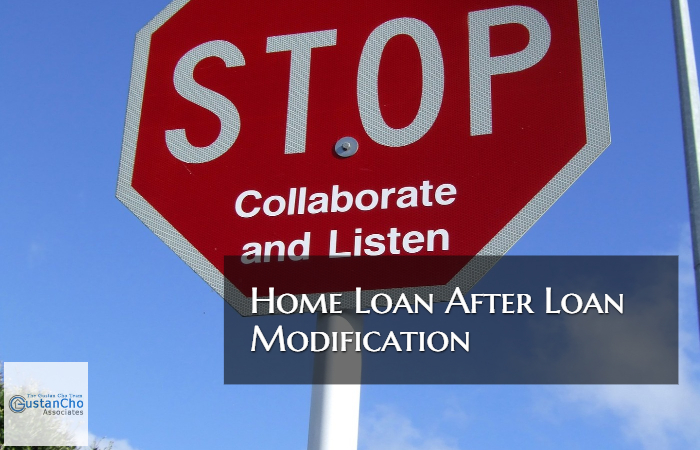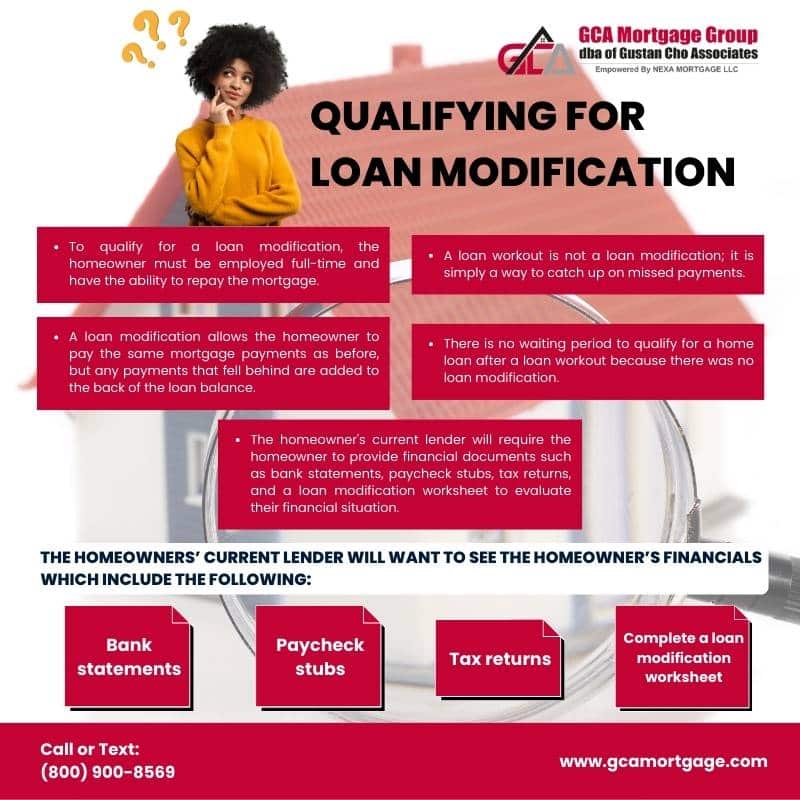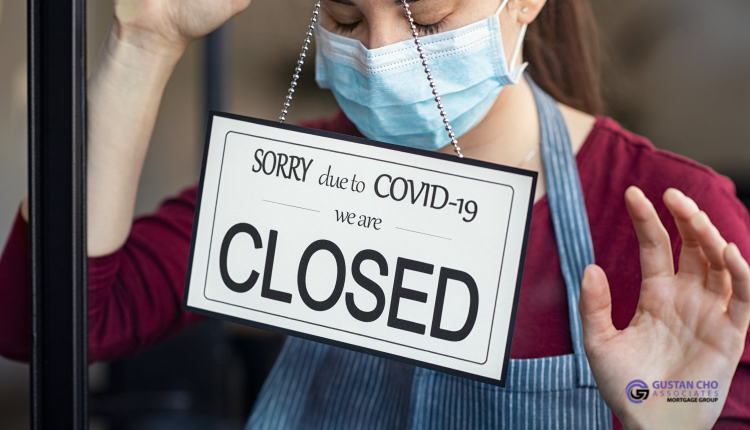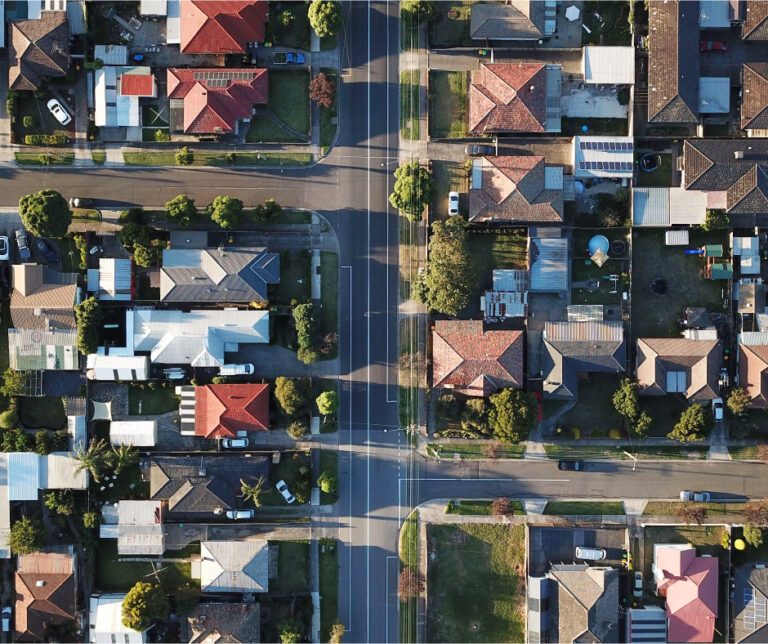Home Loan After Loan Modification Mortgage Guidelines
This blog will cover qualifying for a home loan after loan modification mortgage guidelines. A loan modification is when the current lender restructures the homeowner’s current mortgage loan to make it affordable for homeowners and avoid foreclosure. There are various ways of modifying a mortgage. The delinquent payments of the mortgage payments homeowners have been delinquent can be added to the back of the mortgage loan balance. This way, the homeowner can afford their housing payments. This will enable homeowners to stay in their homes instead of facing foreclosure. Angie Torres, the National Operations Director at Gustan Cho Associates, said the following about qualifying for a home loan after loan modification:
Loan modifications used to be very popular right after the 2008 Real Estate and Mortgage Collapse. Homeowners with upside-down mortgages lost their jobs or businesses and could not afford their mortgage payments. Lenders often offered loan modifications to homeowners who could prove their financial hardship but would be able to afford their mortgage payments and other monthly expenses.
A homeowner can qualify for another mortgage after a loan modification. However, to qualify for another mortgage after a loan modification, there are mandatory waiting periods to qualify for a mortgage loan after a loan modification. This is dependent on the type of loan program. This article will discuss qualifying for a mortgage after modification for FHA and VA loans.
How Can A Homeowner Qualify For Loan Modification?
Homeowners can have extenuating circumstances such as the following:
- have had periods of unemployment
- loss of business
- medical issues
- divorce
- or other extenuating circumstances
Extenuating Circumstances By Homeowners
Extenuating circumstances often disrupt homeowners’ steady flow of income disrupted. They often fall behind on their mortgage and are on the verge of foreclosure. These homeowners can qualify for a home loan modification. Lenders do not want to foreclose. Alex Carlucci advises the following:
Homeowners who had a sudden change of circumstances, such as a loss of employment, are undergoing a divorce, or have other issues, should contact their lender before defaulting on any mortgage payments. Lenders do not want borrowers’ homes.
. They do not want to foreclose on borrowers’ homes. Lenders want to work with borrowers. Often lenders do understand that extenuating circumstances do happen. Lenders can offer homeowners a mortgage workout plan or loan modification plan.
Qualifying For Loan Modification
To qualify for a loan modification, the homeowner needs to be employed full-time with the ability to repay the mortgage. It will often be near impossible to repay the mortgage payments so the homeowner will pay the same payments as before on a loan workout. But the number of payments that fell behind will be added to the back of the loan balance. This is not a loan modification. It is called a loan workout. On a loan workout, there is no waiting period to qualify for a home loan after a loan modification. This is because there was no loan modification. The homeowners’ current lender will want to see the homeowner’s financials which include the following:
- bank statements
- paycheck stubs
- tax returns
- complete a loan modification worksheet
Documents Required To Qualify For Home Loan Modification
Again, to qualify for a loan modification, the homeowner must show they are employed full-time. The lender will then look at the homeowner’s financials, including their income and expenses, and decide on the maximum home expenses the homeowner can afford. Once the lender has determined the maximum housing expenses, the lender will determine whether or not the homeowner can qualify for a loan modification. Dale Elenteny of Gustan Cho Associates issued the following statement on getting a home loan after loan modification:
If the current payments the homeowner is paying are too much, the lender will determine a lower amount of the new payment the homeowner can afford. This can be accomplished by the lender lowering the mortgage rates to a lower rate than the actual rate. Or, the lender may discount the original loan balance, take a loss, and restructure the mortgage loan.
The loan modification process is a process and may take many months. Once a settlement has been reached, the borrower will have their loan modification finalized and start making payments with the new agreed payment.
Qualifying For Government Home Loan After Loan Modification
Homeowners who had a loan modification may decide to sell their home after the mortgage loan modification was done and purchase a new home. Suppose the homeowner who had a prior loan modification done decides to sell their current home and purchase another home with an FHA loan. In that case, there is a mandatory waiting period to qualify for a home loan after loan modification.
To qualify for an FHA home loan after loan modification, there is a one-year waiting period after the loan modification. Proof of 12 months of timely payments to the lender after the modified loan. There cannot be any late payments after the home loan modification.
Lenders want not only to see timely payments on mortgage payments but all of the other monthly debt payments to be paid timely in the past 12 months. VA and USDA loans have the same one-year waiting period to qualify after a loan modification.
Qualifying For Conventional Home Loan After Loan Modification
Qualifying for a conventional home loan after loan modification requires a waiting period of four years after the loan modification if the mortgage loan has been restructured. Fannie Mae and Freddie Mac define a restructured mortgage loan as a home loan in which the lender has changed the original terms and conditions. It has been changed or restructured by the following:
- Either by the lender forgiving part or all of the mortgage loan balance
- or if the lender had to restructure the original debt by modifying the original loan to a new mortgage by reducing the interest rate
- or by reducing the monthly principal and interest payments so the homeowner can afford to pay the payments and stay and keep their home
Restructuring Loan To Make It Affordable
This section will cover examples of restructuring a home loan through loan modification. The lender will forgive a portion of the principal, interest, or a combination of both on the first or second mortgage loan balance. Application of a principal curtailment, except as permitted by policy. Converting any portion of the original mortgage loan debt to a “soft” subordinate mortgage
They are converting any portion of the original mortgage debt from secured to unsecured. Borrowers can qualify for a conventional home loan after modification 48 months have passed since the restructuring of the mortgage loan modification has occurred. Borrowers cannot have any late mortgage payments for the past 24 months.
Borrowers with a prior mortgage loan modification need to apply for a home loan after a loan modification, please contact us at Gustan Cho Associates at 800-900-8569 or text us for a faster response. Borrowers can also email us at gcho@gustancho.com.











